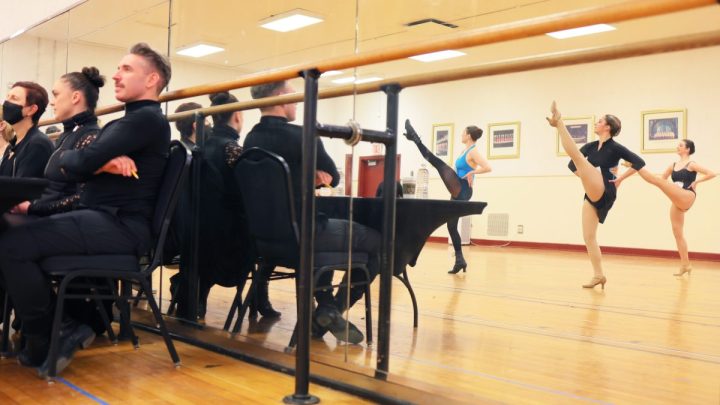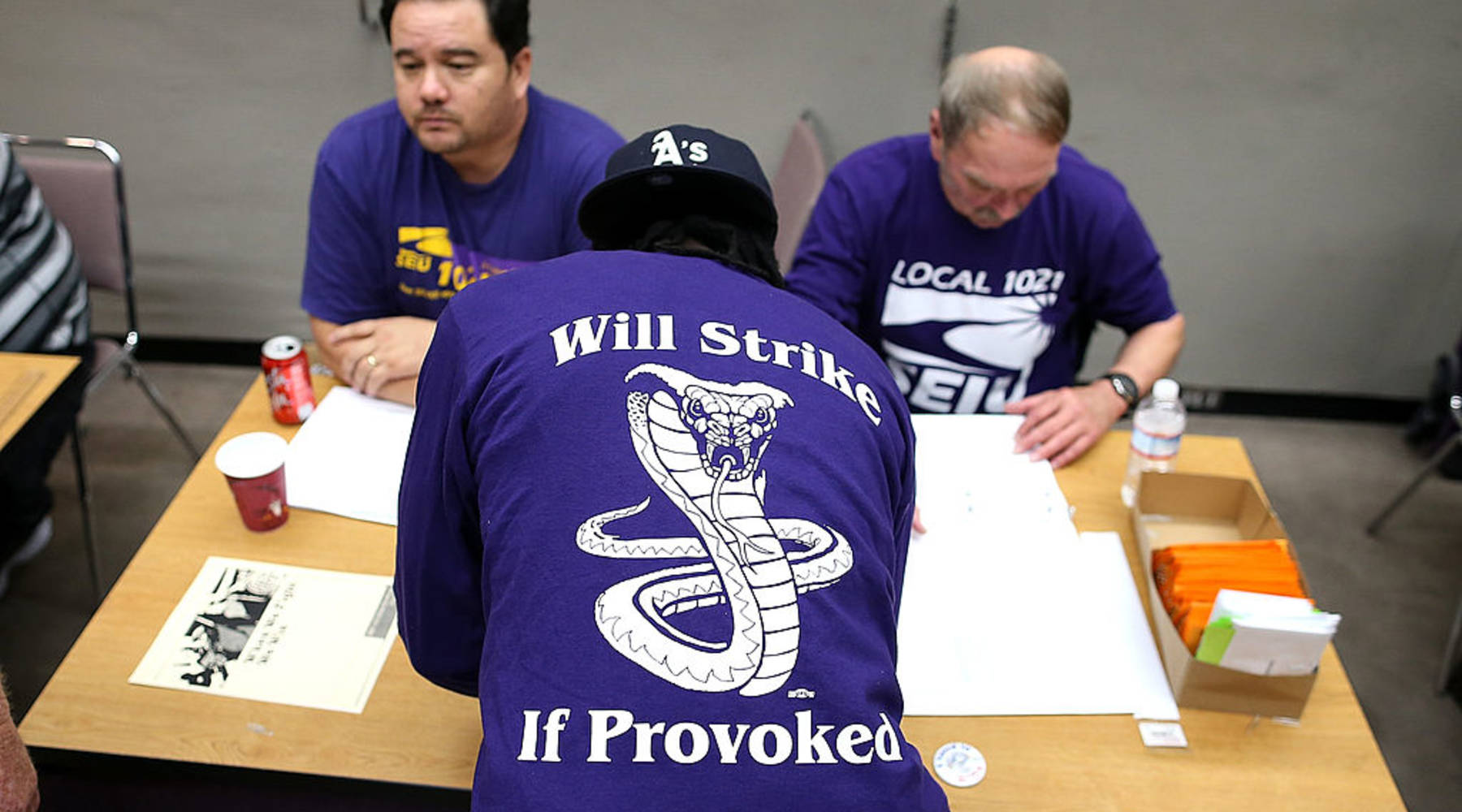
Film and TV choreographers are organizing their own union

At one point in the 1989 music video for Madonna’s song “Express Yourself,” the singer crawls in a slinky dress under a long table. She then proceeds to stick out her tongue and lap up milk from a bowl like a cat.
The video’s so-to-speak vibe is in large part due to choreographer Vincent Paterson.
Paterson, who now primarily works as a director, describes teaching the superstar how to elegantly hold a cigarette in a cigarette holder like an old film siren and how to execute the suggestive crawling scene. “There’s so much more that we do than just create ‘5, 6, 7, 8,’” he says.
Yet working with big Hollywood names doesn’t necessarily mean that choreographers receive similar guaranteed minimum wages or benefits as their entertainment industry peers. That’s because commercial choreographers — those working in film, television, music and on digital platforms — haven’t had a union they can join.
That is, until recently.
As Hollywood writers remain on picket lines for a fourth straight week and the actors’ union, SAG-AFTRA, held a strike authorization vote in sympathy with them, commercial choreographers are creating a union of their own.
After forming in 2022, the Choreographers Guild started accepting members this spring. The labor organization plans to tackle a host of issues: It aims to establish a standard pay minimum, secure health care and pensions, strengthen choreographers’ copyright rights and more.
“Choreographers are asking for the same thing that has been standard in the entertainment industry for other creative professions for decades,” said Steve Sidawi, a labor organizer and the guild’s interim executive director.
In the 1930s, when many entertainment industry unions and guilds formed, Sidawi said that “somehow, choreographers fell through the jurisdictional cracks.”
Most commercial choreographers are gig workers, as are most unionized artists. But not having a union to belong to has made working in the industry particularly challenging for those who create dances for the screen.
While the image of Hollywood is often one of glamor, fame and money, that’s not the reality for most creatives in the field, per Kate Fortmueller, an assistant professor at the University of Georgia who studies labor organizing in the entertainment industry.
“The work itself is project-based,” she said. “Not everybody works constantly, so the unions can provide a little bit more stability.”
In addition to that stability, choreographers are also looking for visibility in the industry. For many, that starts with crediting — which varies widely and depends on an artist’s stature, representation and the director and producers with whom they work.
“Our credit is our currency for future work, period,” said Luam Keflezgy, who goes by her first name professionally and is the guild’s vice president as well as a choreographer for Alicia Keys, Kelly Rowland and others. “So if we’re not able to really back that up, and in a visual way, it can definitely hurt us. And has.”
Yet obtaining residuals — a major sticking point in the current writer’s strike — and intellectual property have been by far the biggest challenge for choreographers.
Paterson said it was impossible for him to negotiate residuals or ownership rights for his choreography. And he worked with Michael Jackson, arguably the best dancer in pop music history.
“We’re talking hundreds and hundreds of thousands of dollars that we miss out on, that producers get or directors get … or the artists get ultimately that we don’t get a penny,” he said.
Even the dancers, the very people performing a choreographer’s work, may receive residuals in film and television because they are often unionized. Keenan Cooks, a 32-year-old choreographer, knows firsthand how critical these payments can be from his days as a dancer on sets. He was able to start a savings account from residuals that he received for a few years from a gig on the TV show “Lip Sync Battle.”
“It really does save your life,” he said of the payments.
Better and standardized work conditions are still far off for the Choreographer’s Guild; its members must first enter into a collective bargaining agreement with entities that employ choreographers. One of the guild’s counterparts in that effort may be the Alliance of Motion Picture and Television Producers, which is currently in a standoff with the Writers Guild of America. AMPTP declined to comment.
But even though a long, possibly drawn-out process is ahead, “we’re prepared to step into any situation we have to get what we need now,” Paterson added.
There’s a lot happening in the world. Through it all, Marketplace is here for you.
You rely on Marketplace to break down the world’s events and tell you how it affects you in a fact-based, approachable way. We rely on your financial support to keep making that possible.
Your donation today powers the independent journalism that you rely on. For just $5/month, you can help sustain Marketplace so we can keep reporting on the things that matter to you.

















